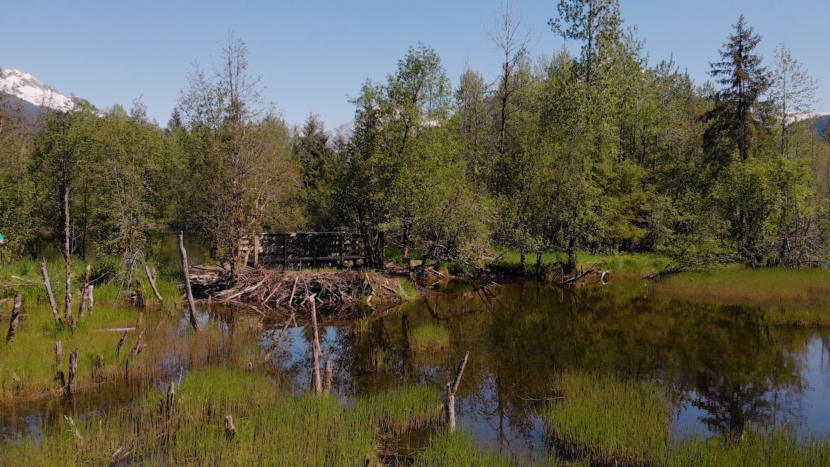
The Baldwin Peninsula near Kotzebue has seen a massive increase in beavers over the last two decades, according to new research from the University of Alaska Fairbanks.
With more beavers come more dams, which impacts everything from fish populations to permafrost. Scientists and locals are still trying to figure out what caused the dam influx, and how to slow some of its more serious effects.
Henry Horner is the president of the Tribal Council for the village of Kobuk. He’s lived in the village since the 1950s, and says that he remembers beavers popping up in the region periodically, but there are considerably more now. And they can be a nuisance.
“Where we subsist for fish and stuff like that, they’ll be blocking the creeks,” Horner said.
A new paper from the University of Alaska Fairbanks shows a massive increase in beaver activity in the region. In 2002, there were two beaver dams near Kotzebue. Now there are 98. And when beavers dam, UAF researcher Ken Tape says you can see it from space.
“What we’re seeing in the satellite imagery is that beavers have been building these new ponds and moving into these treeline [areas] and eventually into these tundra areas,” Tape said. “And that’s pretty exciting and a little bit scary as well.”
He says he’s not surprised the beavers like the area. It’s got water, food and willow trees for them to form dams. While scientists don’t yet know what caused the migration, Tape says that there’s speculation that the beavers could be migrating in response to heavy trapping during the 19th Century. Additionally, he says climate change may be a factor.
“We know that their habitat has improved in the tundra, more shrubby vegetation, more unfrozen water in winter,” he said. “So beavers are probably exploiting those things, the improved habitat, and moving into these tundra areas.”
When beavers build their dams, they are slowing down streams and flooding the surrounding land. That introduces a new source of heat to the area, adding to the gradual decline of permafrost. Additionally, when you create a pond where there was none before, it creates thermokarsts.
“You thaw permafrost and you create these pits in the landscape where that permafrost was thawed,” Tape said. “The ground subsides, and it can turn into kind of a mess.”
Tape says beavers tend to flock to these thermokarsts, compounding the impact they were already making on the landscape.
“What we see is that beavers seem to be accelerating the effects of climate change when they make these ponds,” Tape said. “And if it were just a few dozen ponds, it wouldn’t be a big deal. But what we’re actually seeing is thousands of new ponds over the recent decades.”
Back in Kobuk, tribal president Horner says in addition to increasing the rate of permafrost melt, the beavers are also affecting salmon spawning.
“Farther up [the Kobuk] river, I see where they’ve built dams, and the salmon have to start spawning elsewhere,” Horner said.
Horner says some locals think that eliminating the beavers is a viable solution to their concerns, though he doesn’t see it as very practical.
“Some of our elders would say, ‘kill the beaver,’ and they might get the beaver,” Horner said. “But while they think they’ve got it, another one arrives.”
Tape, with UAF, says that he doesn’t see the beavers as a pest, but there are local and global implications to having thousands of new lakes in the area. He says that researchers are hoping to meet with a group of locals to discuss the future of beavers in the Northwest Arctic.
“We’re going to need local perspectives if we want to implement any management. Or maybe the management is hands-off, and let’s see what happens. I think that depends a lot on what people decide in these various communities.”
For now, Horner in Kobuk says they’re going to continue keeping a watchful eye on their new neighbors.
